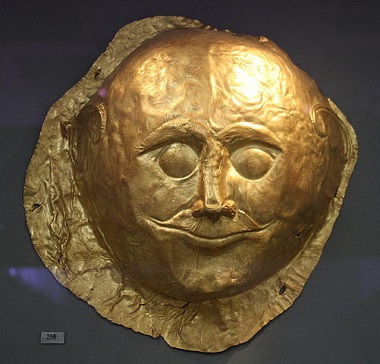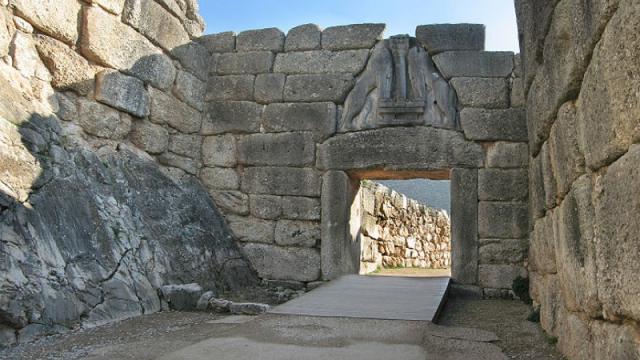One of the great early civilizations collapsed in a mere fifty years, with 75% of the population disappearing a century later. What the hell happened to ancient Greece?
When we think of ancient Greece, we typically think of robes and columns and people inventing democracy. That’s fine, but it arguably involves people who weren’t originally Greek. The classical age of Greece came after most of mainland Greece was populated by northern tribes. Whether these tribes came to the area as part of an invasion or a migration is up to the historians. What’s certain is they weren’t the first great civilisation there.
That distinction belongs to the Mycenaean civilisation of the late Bronze Age. Now, to be fair, the Mycenaeans had already toppled an empire, the Minoans, but they had replaced it with an empire of their own. In 1500 BC, they ran their empire from Crete, but had far-flung settlements. They lived in well-built palaces which they decorated with bronze and ceramic art. They had a complicated trade network, shipping staples, such as grain, and specialty products, such as perfumed oils, all over the Mediterranean. They even went exploring. Around 1300 BC, their ships were still crossing the ocean with cargo from Cyprus, Canaan, Egypt, and Anatolia.
But by 1200 BC, their palaces were destroyed, their major cities were abandoned, and most of their technology seems to have been forgotten. By 1100 BC, 75% of their population had disappeared.

How did the accomplishments, knowledge, and population of one of the great powers of its time disappear?
The first sign that something was wrong came in 1250 BC, when many great cities suddenly started strengthening their outer walls. We don’t know who they were trying to defend themselves from, but it didn’t seem to do any good. Fifty years later, most large cities were in ruins.
Some historians speculate that the “Sea Peoples” may have been involved. These aggressive boat people show up in Egyptian records around 1200 BC. They could have been the people who brought the walls down in Mycenae or they could have been the refugees fleeing from their ruined cities. We don’t know.
From about 1185 onwards, there were grain shortages in the agricultural areas of the trade network. If even the farmers were going hungry, a city, newly-destroyed, and with only luxury goods to sell might have suffered famines that would deplete the population, or convince everyone to move out on in search of food. And some people believe that it was the Dorians themselves who crushed the Mycenaean civilisation and drove out its people.
Perhaps the most unsettling conclusion is that it was no one thing. Empires rise and fall. Technology flourishes and is forgotten. A spell of bad luck can wipe out an entire civilisation.
